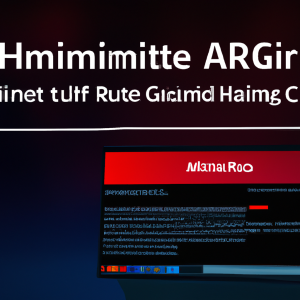Metasploit Replaced by AI
In the ever-evolving landscape of cybersecurity, the tools and techniques used to protect and penetrate systems are constantly advancing. One of the most significant developments in recent years is the integration of artificial intelligence (AI) into cybersecurity practices. This article explores the potential of AI to replace traditional tools like Metasploit, a widely-used penetration testing framework, and examines the implications of this shift.
The Role of Metasploit in Cybersecurity
Metasploit has long been a cornerstone in the toolkit of cybersecurity professionals. Developed by H.D. Moore in 2003, Metasploit provides a comprehensive platform for developing, testing, and executing exploits against a variety of systems. Its capabilities include:
- Automated vulnerability scanning
- Payload generation
- Post-exploitation tools
- Integration with other security tools
Metasploit’s open-source nature and extensive library of exploits have made it a go-to resource for penetration testers and ethical hackers. However, as cyber threats become more sophisticated, there is a growing need for more advanced tools that can keep pace with the evolving threat landscape.
The Rise of Artificial Intelligence in Cybersecurity
Artificial intelligence has made significant strides in various fields, and cybersecurity is no exception. AI’s ability to analyse vast amounts of data, identify patterns, and make decisions in real-time makes it a powerful tool for both defensive and offensive cybersecurity measures. Key areas where AI is making an impact include:
- Threat detection and response
- Automated vulnerability assessment
- Behavioural analysis
- Incident prediction and prevention
AI-driven cybersecurity solutions can process data at a scale and speed that is impossible for human analysts, enabling faster and more accurate identification of threats. This capability is particularly valuable in the context of penetration testing, where the goal is to identify and exploit vulnerabilities before malicious actors can do so.
AI-Powered Penetration Testing: A New Paradigm
AI-powered penetration testing represents a significant shift from traditional methods. By leveraging machine learning algorithms and advanced data analytics, AI can enhance the effectiveness and efficiency of penetration testing in several ways:
Automated Vulnerability Discovery
AI can automate the process of discovering vulnerabilities in a system, reducing the time and effort required for manual testing. Machine learning models can be trained to recognise patterns associated with common vulnerabilities, enabling them to identify potential weaknesses with high accuracy.
Adaptive Exploitation Techniques
Traditional penetration testing tools like Metasploit rely on predefined exploits and payloads. In contrast, AI can develop adaptive exploitation techniques that evolve based on the target system’s defences. This dynamic approach increases the likelihood of successfully penetrating a system and uncovering hidden vulnerabilities.
Real-Time Threat Analysis
AI can analyse network traffic and system logs in real-time, identifying suspicious activity and potential threats as they occur. This capability allows penetration testers to respond to emerging threats more quickly and effectively, reducing the window of opportunity for attackers.
Enhanced Reporting and Recommendations
AI can generate detailed reports on the findings of a penetration test, including actionable recommendations for remediation. These reports can be tailored to the specific needs of the organisation, providing valuable insights into the most critical vulnerabilities and the steps required to address them.
Case Studies: AI in Action
Several organisations have already begun to integrate AI into their penetration testing practices, with promising results. Here are a few examples:
Case Study 1: Financial Institution
A large financial institution implemented an AI-driven penetration testing solution to enhance its security posture. The AI system was able to identify previously undetected vulnerabilities in the institution’s network, including:
- Unpatched software vulnerabilities
- Misconfigured security settings
- Weak authentication mechanisms
By addressing these issues, the institution significantly reduced its risk of a cyber attack and improved its overall security resilience.
Case Study 2: Healthcare Provider
A healthcare provider used AI-powered penetration testing to assess the security of its electronic health record (EHR) system. The AI system identified several critical vulnerabilities, including:
- Insecure data transmission protocols
- Insufficient access controls
- Outdated software components
The provider was able to remediate these vulnerabilities, ensuring the confidentiality and integrity of patient data.
Case Study 3: E-commerce Platform
An e-commerce platform utilised AI-driven penetration testing to evaluate the security of its web applications. The AI system discovered multiple vulnerabilities, such as:
- Cross-site scripting (XSS) flaws
- SQL injection points
- Insecure API endpoints
By addressing these issues, the platform enhanced its security and protected customer data from potential breaches.
Challenges and Considerations
While AI-powered penetration testing offers numerous benefits, it is not without its challenges. Organisations must consider several factors when implementing AI-driven solutions:
Data Quality and Availability
AI systems rely on high-quality data to function effectively. Organisations must ensure that they have access to comprehensive and accurate data sets for training and testing AI models. Incomplete or biased data can lead to




